From Agony to Ecstasy to Tragedy, and then from Ecstasy to Tragedy again.
How Vincent Van Gogh`s world altering masterpiece
became Rothko´visionary altarpiece.

In this post I aim to show that Vincent Van Gogh´s revolutionary painting Wheatfield with Crows´ inspired Mark Rothko to paint his Blue/Yellow/Black masterpiece,
also known as; ´Tragedy and Ecstasy´.
Although I am an artist myself, I am also an avid art historian. Of course like most art loving artists I have mainly studied the lives and works of my own particular favorite artists.
Michelangelo Merisi da Caravaggio (mostly known simply as Caravaggio), Vincent Van Gogh,
Pierre-Auguste Renoir, Pablo Picasso and Mark Rothko.
I was a fan of Caravaggio a decade before he became trendy, and I am one of the few in the world who have read the entire volumes of Van Gogh´s letters. My first love was for Renoir because of his wonderful color as well as his love of the female form. Then about five years ago I fell in love with the works of Rothko. I mainly loved his philosophy and concept, but later when I saw his Seagram series in London, I was simply blown away.

The Vincent Van Gogh Letters Volumes 1,2 and 3 containing 930 letters, of which 630 were to his brother, Theo.
Everyone knows that Van Gogh epitomizes the suffering artist but perhaps not many know that Rothko too did not have an easy time of it. Both of them also committed suicide.
At the end of first year at university I spent my entire summer vacation reading the three volumes of Van Gogh´s letters. Apparently your name goes onto a list somewhere when you do this and as such entitles you to have an informed opinion/comment on the artist due to getting to know his mind intimately.
What I learned from this was that Van Gogh was indeed a tortured soul, but he was no lunatic as is often portrayed. He was a passionate man and as such his emotions often over took him and this constantly caused conflicts with others who found his nature offensive.
There is an argument today as to whether Vincent suffered from Epilepsy or Bipolar. At the moment Bipolar is winning. Indeed, he had all the classic symptoms of the extreme highs and lows of manic depressive behavior. Bipolar has three episode intensities, with Bipolar (1) being the most intense and usually means a period of time in an institution.
The episode where Vincent cut off his ear and takes it to a local prostitute is classic Bipolar (1) behavior, as was times when he actually ate his oil paints.
I believe that his last desperate hours on this earth was caused by
such a Bipolar (1) type episode.
It it not proven, but is generally claimed or agreed that his last painting/masterpiece was the spectacular work known today as ´Wheatfield with Crows´ - see below
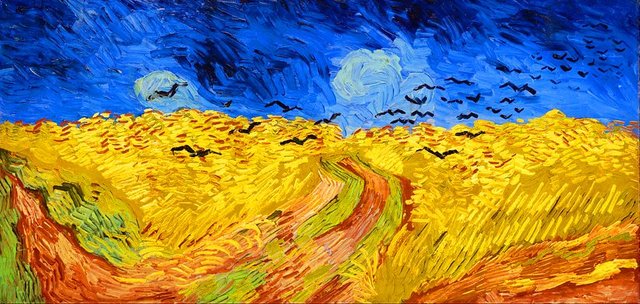
On the very day Van Gogh was out in the fields working on this astonishing painting, a local farmer witnessed him frantically talking to himself saying;
"It´s impossible, it´s impossible".
What did Vincent mean?
Later that day he shot himself in the stomach and died slowly and in extreme agony.
A tragic end to a tragic life.
But during this turbulent life I am certain that Vincent must have had moments of extreme ecstasy reached through periods of painting.
I have experienced such moments myself on occasion when something deep inside comes out onto the canvas in a moment of high creativity.
I think on that fateful day in the summer of 1890, Vincent was in one such intense moment of creativity and that he simply could not put on canvas what was bursting inside to come out. Thus; "It´s impossibe"

But what exactly was impossible?
For me, I believe he meant that he simply could not capture the intense emotional sensation he was feeling and the frustration of this triggered a Bipolar episode.
Very little is known what actually triggers a Bipolar episode but what is known is that stress and lack of sleep does not help.
Vincent had not been sleeping well that week. I know because I read his letters. And what is rarely written about about this last week of his life, is that I believe Van Gogh was in love but was told that this love was forbidden to him.
At this time Van Gogh was under the supervision of a psychiatrist called Dr Gachet he had a daughter called Marguerite. She was only 20 years old and Vincent was 36. We know that she posed for Vincent many times which tells us that they spent many hours alone together.
Below is a painting Vincent did of Marguerite playing the piano.
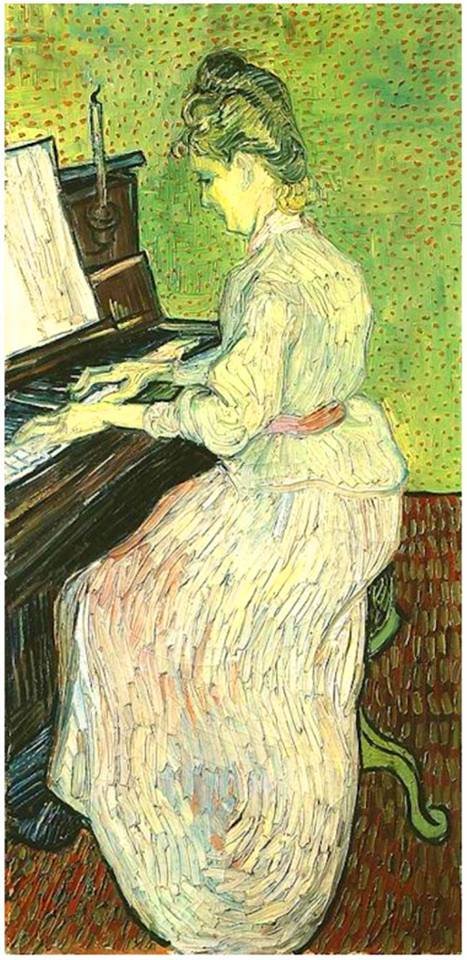
In one of his last letters to his brother Theo, it was clear that he was in a positive mood.
Vincent spoke of perhaps soon he might become a married man, just like his brother.
However, no name of this mysterious woman was ever mentioned.
This subject of Vincent being in love has been ventured into before in the novel by Alyson Richman Berkley in her fictional novel "The Physicians Daughter ; Marguerite Gachet.
I believe that Vincent had planned to ask his psychiatrist, Dr Gachet, for his daughter´s hand in marriage and I believe Dr Gachet gave him a firm "No."
A rejection like that would surely push anyone´s emotions to the edge.
It is well known that Vincent´s favorite color was yellow. He only painted images of yellow when he was happy. So why was he painting a yellow wheat field if he had just been rejected by Dr Gachet?
My theory is that Vincent had already begun this painting before he spoke with Dr Gachet.
Vincent must have known it was a masterpiece and perhaps intended to give it to Dr Gachet as a gift to help persuade him to let him marry his daughter.
Dr Gachet was an avid art collector and owned several works of the great artists of the day,
including several by Cezanne. Today those paintings much be worth millions.
Dr Gachet also loved Vincent´s work and he had been given many from his brother, Theo, as means of payment for his brother´s sessions.
And so I think that this painting began its life as a happy painting because he expected a "YES" answer from Dr Gachet. And perhaps on that tragic day he got a "NO" instead.
And so then later, when he went out to finish the painting, his inner turmoil from being rejected caused a conflict of emotions, thus causing a Bipolar episode.
What convinces me of this is that, when a person has a Bipolar (1) episode, they can often hallucinate. The eye witness who saw Vincent shouting; "Its impossible", also said that there were no crows in the field that day.
I think the crows were an hallucination. Have a look at the painting again below

While we are here, perhaps I better give a quick explanation as to why this painting has been attributed as the painting that created Modern art.
It´s all to do with perspective.
Visual perspective and color perspective.
First of all, Vincent destroys the visual illusion of perspective.
If you look at the road in the center of the painting it defies the idea of perspective drawing in that it starts wide and then becomes narrow as it goes off into the distance.
However, it could easily be just a strange curvy color shape popping up into the image.
This had never been done before in the history of painting.
Secondly we have color perspective.
Color perspective is not so well known to the lay person so I will explain it in simple terms.
Think of Blue as the color we associate with the sky.
Therefore anything blue the eye perceives it as receding into the distance.
This second color that comes more closer to the eye is green.
Thus the further away the green is the more bluish the green becomes.
This is why tress look more bluish when they are far away.
The final color is Red which is the first color the eye sees.
This is why traffic lights are red because we have to react to them quickly.
So by simply using three colors the artist can create the illusion of depth.
This painting however, Wheatfield with Crows, defies this law.
Have a look again and see how the blue comes forward instead of back.
Again this had never been done int he history of painting and it was this idea of Van Gogh´s that open the door to modern and to such artists as Rothko and his "color field" paintings.
And so, I believe that the sensations Vincent was feeling on that terrible day, of both agony and ecstasy literally split him in half and he just could not get it out onto the canvas.
"It´s impossible, it´s impossible"
This then caused him to suffer a Bipolar (1) episode that drove him to end his own life.
But what was impossible to Vincent on that fateful day,
I believe Mark Rothko managed to achieve some seventy years later in his Untitled field painting - Blue / yellow / black.
See below
Untitled with Blue/Yellow/Black - aka Agony & the Ecstasy

I am hoping that now that you can already see that Van Gogh´s painting and Rothko´s painting have almost identical colors.
This can not be by chance.
Rothko, just as Van Gogh, was extremely sensitive to color. In fact he was probably the most color sensitive person in the whole of art history. He must have been to have been able to produce the astonishing work that he did.
Rothko was just as much a tortured soul as Vincent in spite of him gaining world fame and fortune while he lived.
This of course was the very opposite of Van Gogh
who died unknown and penniless.
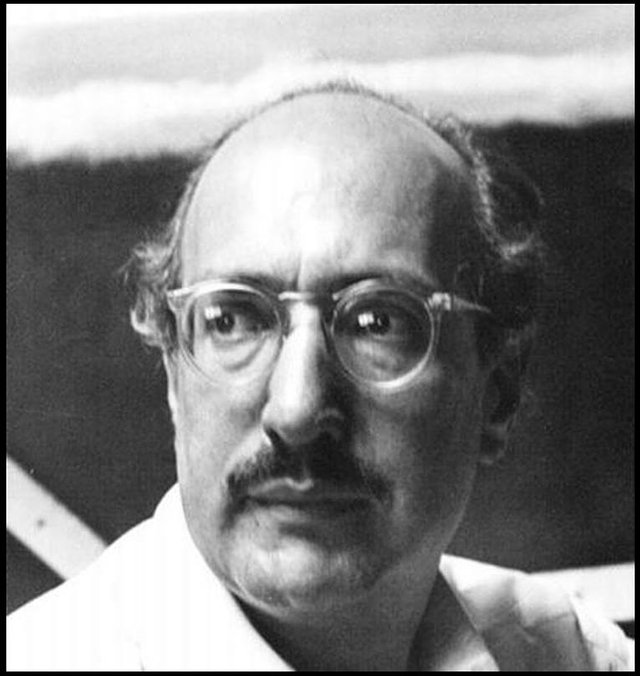
Mark Rothko was super intelligent and could read a book in a day. Such was his thirst for knowledge and the mystery of human existence. And perhaps this was why he became an artist instead of a Harvard Lawyer.
In the world of maths 2+2 will always add up to 4. But how do human beings determine if a work of art is good or not?
This is what Rothko never had trouble in understanding.
He knew from the beginning it was always about the emotions.
This was why he adored Michelangelo and Van Gogh.
Both artists made him feel intense emotions.
However, Rothko´s problem, unlike Vincent, was that he could not let allow his emotions out.
Rothko was controlled and held his inner turmoil trapped inside.
It took him 30 years to finally let go and allow his emotions to spill out onto the canvas. And when they did the result was spectacular. As he explains himself:
"Im only interested in expressing basic human emotions, And the fact that people break down and cry when confronted with my pictures shows that I can communicate these basic human emotions"
Any artist or art historian knows that Van Gogh´s masterpiece change the direction of art forever and that mean Rothko certainly mist have gone to see it with his own eyes.
Rothko´s work seemed to have come out of know where. For thirty years he struggled to make his art work with very little progress. And then BANG! suddenly he starts producing works like the world had never seen before nor since
Personally I think something acted as a trigger and I think it was the moment he was confronted with Van Gogh´s unforgettable image of the Wheatfield with Crows.
I think that when he came face to face with that painting, he felt all the same emotions of agony and ecstasy that Van Gogh felt and thid made a connection inside his heart and brain.
Why else would he call the painting the Agony and the Ecstasy
Have a look at the two paintings together and see if you see what I see. (see below)
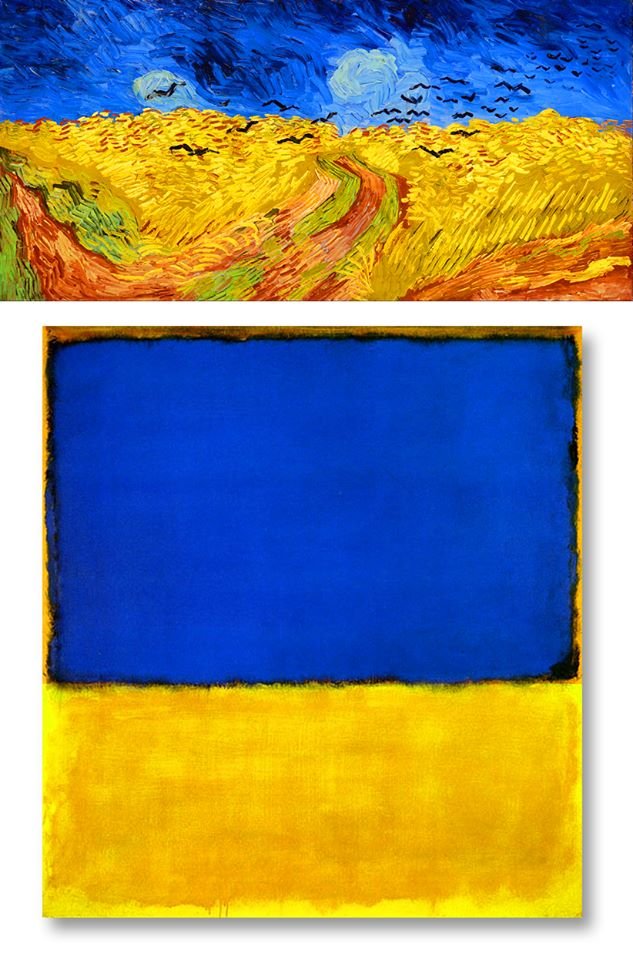
Rothko talked about breaking down human emotions and I think he broke down Van Gogh´s painting the same way.
He took away the parts that were not needed and kept the colors that were creating all the action.
To show what I mean I made a 30 second film example of how this works. See below
<iframe width="560" height="315" src="
This painting is not his most well known work but perhaps for himself it was his tribute to his hero. In a sense, by making the painting so large, he forces us to stand in that field with Vincent in order or us to share in Van Gogh´s moment of being torn apart by his intense conflicting emotions.
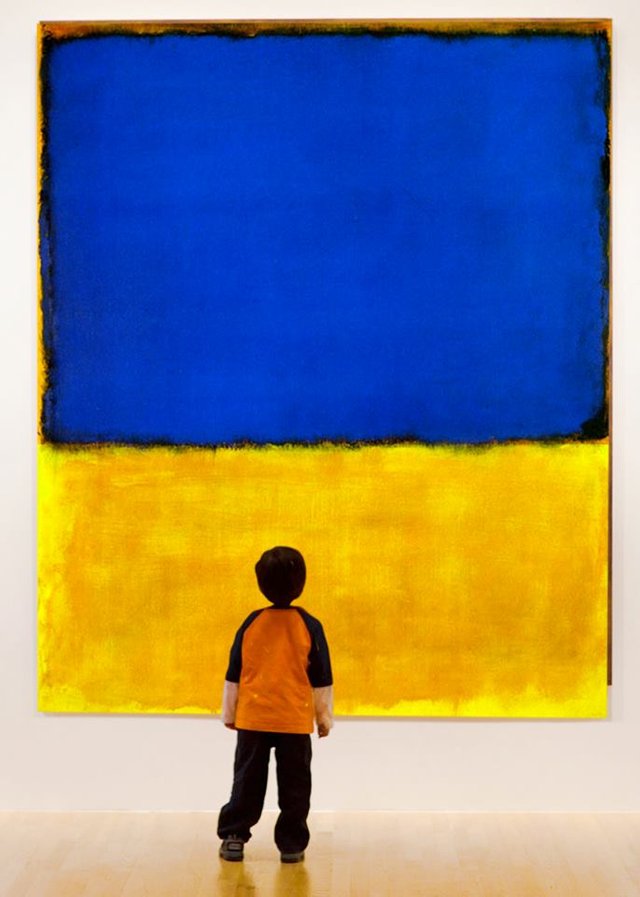
Sadly, as time went by Rothko became increasingly depressed and began to drink and smoke more heavily. His work became darker and darker until they were just black.
An indication of what he was feeling inside.
Finally, on February 25th 1970 he was found dead on the bathroom floor after taking a drug overdose.
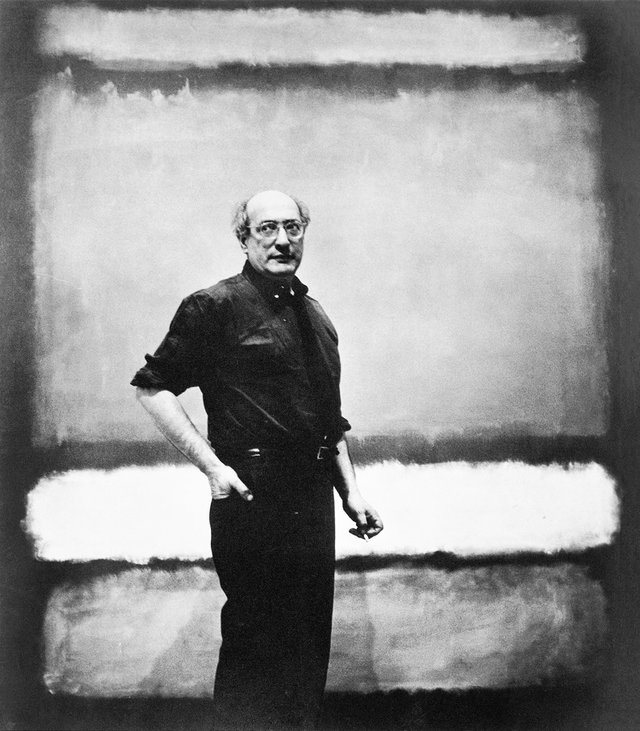
For me personally these two artists are the masters of emotion and expression and as such are attached together forever in art history as I believe are these two great masterpieces of their art.
References:
Van Gogh Musesum Amsterdam archive
The Mark Rothko Foundation
Thank you for reading and thank you for visiting.
Add me to your follow list to see when my next blog comes out.
I wish you a warm welcome back another time.
Very interesting post, thank you.
My first name is also Vincent and I am French.
Maybe 1890, not 1990 ;-)
lol thanks for letting me know I will fix that Cheers
I'm not a fan of modern art, but impressionism is always an intriguing subject. Rothko's rectangles don't communicate anything to me, while Van Gogh conveys movement and feeling.
I understand you I used to be the same at one time. For sure Van Gogh was definitely a genius-
Have you ever been up close to a Rothko?
I doubt proximity matters. I can't shake the feeling that if I can do it, it's not art. I can paint rectangles of near-complimentary colors.
Honestly you need to see one of his close up. The affect he gets is amazing.
When you see them on a screen or in a book they are meaningless. But when you see them close you see there is a lot more too it.
For example, he uses layers upon layers of thin coats of different color tones.
Imagine those net curtains people have on their windows to stop people seeing in but they can see out. Now imagine these net curtains were of different colors. And now imagine them all hanging one in front of another. The effect you would get would be of some kind of weird depth of space, sort of ambiguous as though it had not surface. This is the effect Rothko´s paintings have when you see them up close.
Its like you fall into them.
Its not so much what and colors the shapes are that matters, its what Rothko makes them do on your senses.
It is incredible and you cant get them out of your head once you experience it. Very few artists can achieve this affect.
It took him 30 years of experimenting to achieve it.
Hope this helps a little
Yet another outstanding post. Will you quit it? You're making the rest of us look bad. ;) Your passion for this topic shows.
Ha ha ha lol! Thats a really nice compliment @shenanigator
It is true I do love the world of art and so I guess it is not like its hard work.
I mean I do work hard to make it interesting and engaging but it is not like stressful or anything.
I suppose I just want to try and get people to share in my world for a short period of time.
Its only like me at the moment. I am learning about crypto currency and so have been reading a lot of posts there and engaging in conversations.
I think this is partly what life is all about-- popping into other peoples worlds that they are passionate about and then sharing in this energy and then returning to you own world again.
This is what makes life interesting. How boring it would be if we all liked the same thing.
I appreciate people and their effort in what they are good at.
The post you recently put out about "reputation" I found very helpful and informative and there was no way I could have done that.
You have a talent for simplifying complicated concepts, and in today´s world that is very valuable gift indeed.
Thanks again @shenanigator always appreciated!
I appreciate that. I suppose we are all skilled in our own ways. Be careful entering the crypto world, you might find yourself going down a rabbit hole that you can't escape from. In a good way.
Ha ha ha too late
Awesome post:)
Cheers!
But compared to that mind shocker you just posted it was somewhat tame lol!
Anyways I also like to explore interests of others s well as my own.
This is how we grow and expand our minds.
This is why I love Steemit.
I never got to read stuff like that on Facebook.